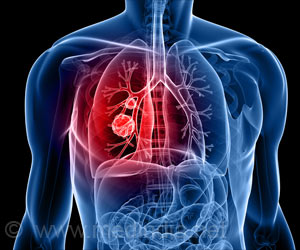Advanced diagnostic tests for micro vascular cardiac disease on the lines of what the Cedars-Sinai Medical Center has on offer,
Advanced diagnostic tests for micro vascular cardiac disease on the lines of what the Cedars-Sinai Medical Center has on offer, will be a good boost to the researchers to develop novel methods to treat this disease. This disease is found to afflict women much more than men.
“Only in recent years have physicians become aware of micro vascular disease - a dysfunction of the heart’s small arteries - as a significant problem for women,” explains Bairey Merz, who directs Cedars-Sinai’s new Women’s Heart Program and its Preventive and Rehabilitative Cardiac Center. “Now the challenge is to integrate into medical practice systematic ways to diagnose and treat the condition.”It is estimated that about two to three million women in the U.S. may suffer from microvascular cardiac disease that is not being diagnosed by conventional detection methods. In light of this, Cedars-Sinai’s Women’s Health Program is focusing its expertise on diagnosing and reducing heart disease through a preventive approach that includes state-of-the-art screening and diagnostic testing.
Microvascular coronary artery disease affects the small arteries found throughout the heart, reducing their ability to maintain the oxygen needed by the heart muscle to function properly. The usual tests to diagnose coronary heart disease – electrocardiogram (EKG), exercise stress test, echocardiogram and angiogram – test for dysfunction in the large arteries. Until recently, there was not an accurate diagnostic test for disease in the small arteries.
A new, pharmacological stress test for microvascular disease - an acetylcholine endothelial function and adensosine coronary flow reserve test - is now available at Cedars-Sinai’s Cardiovascular Interventional Center and promises to “greatly enhance our ability to diagnose and treat women with ischemic heart disease,” says Bairey Merz.
During the two-step test, the drug adenosine, which normally causes the small vessels of the heart to dilate, is injected into one of the coronary arteries and the amount of blood flow is measured. Next, the drug acetylcholine, which normally causes dilation in the large arteries, is injected and the amount of blood flow is again measured. If either test shows decreased blood flow to the heart muscle, a diagnosis of microvascular disease can be made in women with evidence of insufficient blood flow to the heart muscle and open coronary arteries. Medical therapy is then directed at the specific problem.
Another new test to help researchers better diagnose microvascular coronary disease is cardiac MRI which is available at Cedars-Sinai’s S. Mark Taper Foundation Imaging Center. This test can show poor blood supply to the inside layer of the heart muscle.
Advertisement
Source: Newswise









